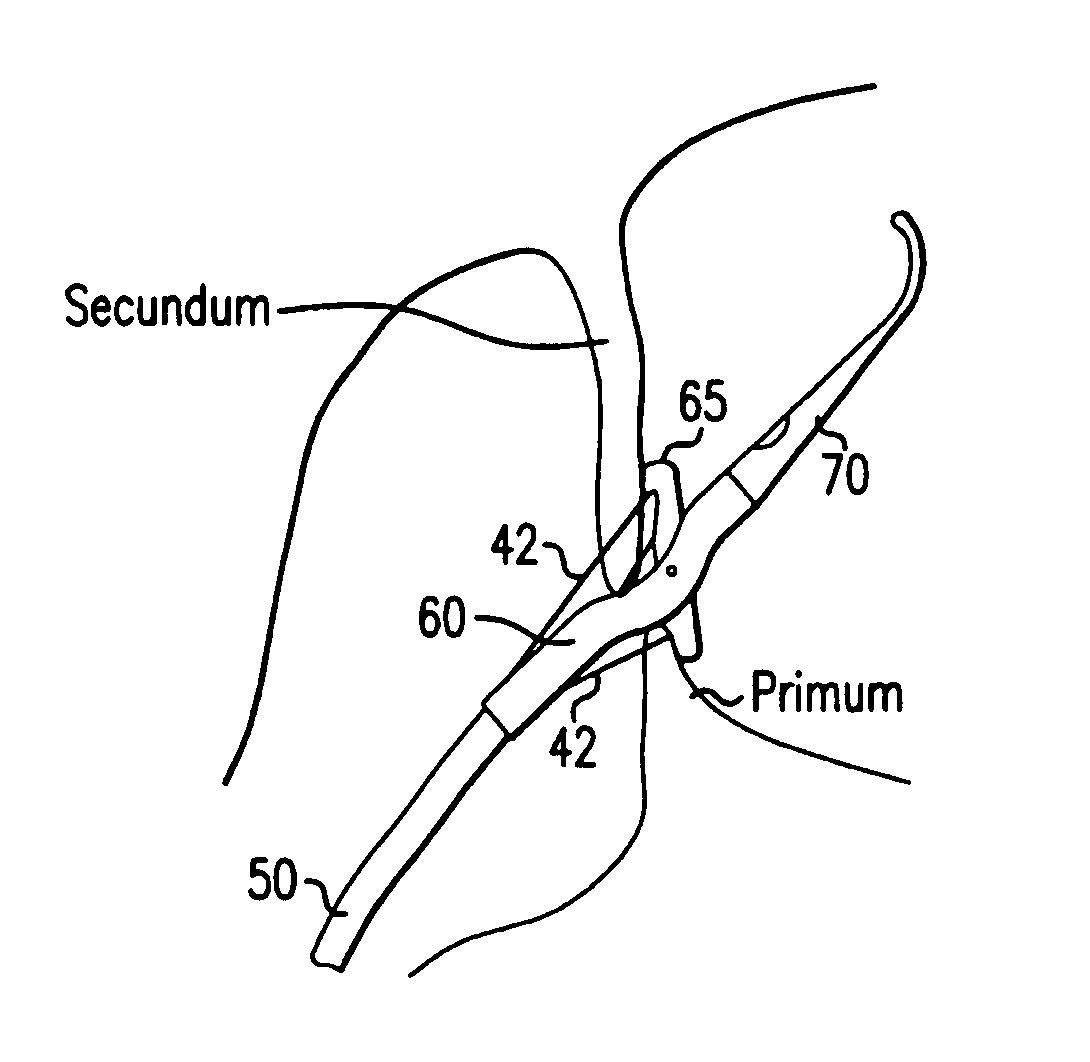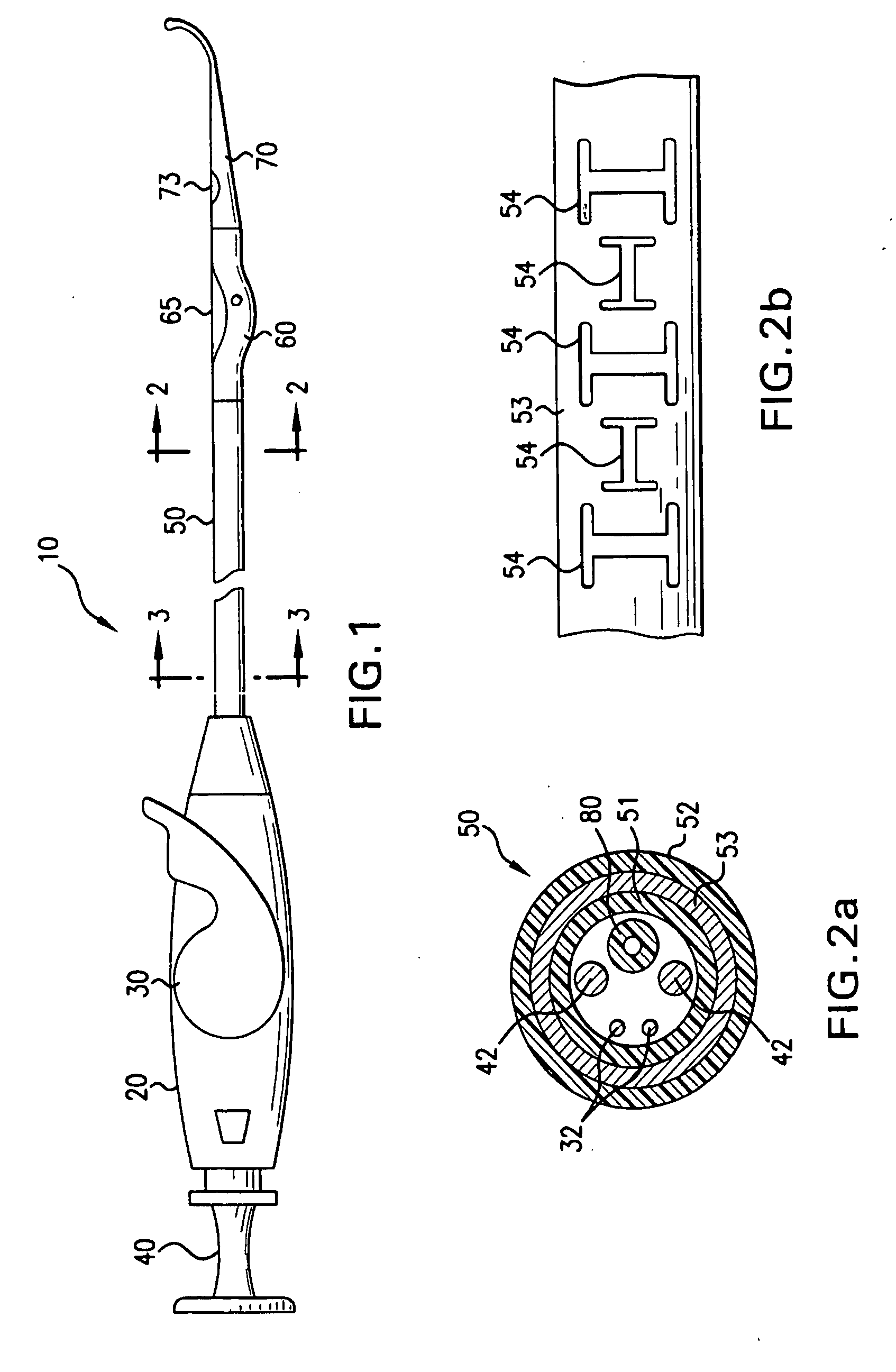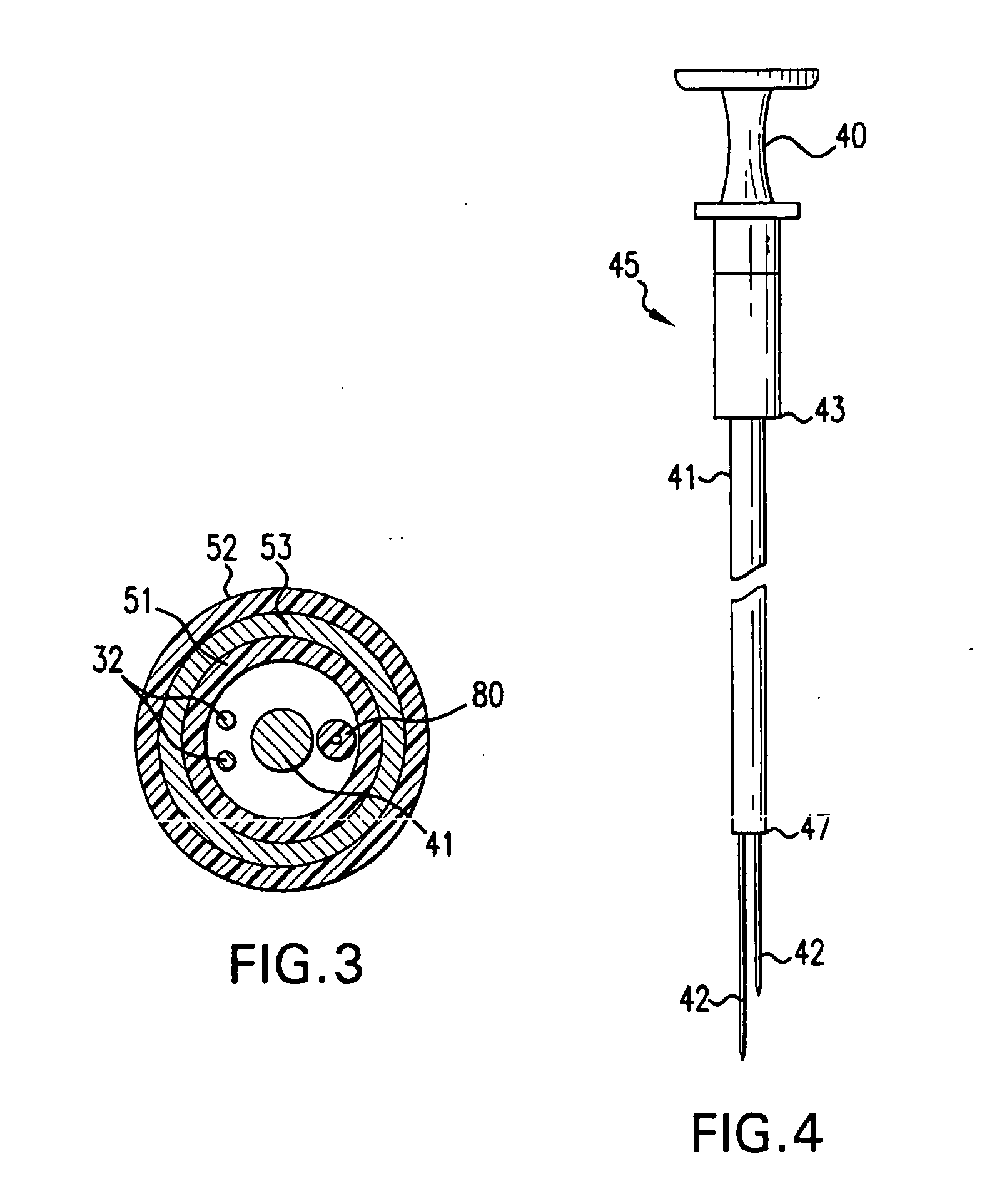Device for suturing intracardiac defects
a technology of intracardiac defect and suture device, which is applied in the field of transcatheter devices and methods for suturing intracardiac defects, can solve the problems of pfo's complex anatomical structural features, and affecting the clinical outcom
- Summary
- Abstract
- Description
- Claims
- Application Information
AI Technical Summary
Benefits of technology
Problems solved by technology
Method used
Image
Examples
Embodiment Construction
[0045] In accordance with the present invention there is provided a device and methods for closing intracardiac defects. The device according to the present invention include a handle portion, a flexible elongated member extending from the handle portion at one end and connected to a foot housing at the other end, a deployable foot disposed within the foot housing and a flexible distal tip. At least one needle and more preferably two needles are disposed within the flexible elongated member. The suturing device is configured to dispose a length of suture across the site of a PFO, wherein the suture is placed through the tissue adjacent the opening to close the opening. As described in more detail below, the suture is advanced through the tissue by a pair of needles that penetrate the tissue adjacent the opening, connect with the ends of the suture, and move the suture through the penetrations in the tissue to span the opening. A knot is then loosely tied with the length of suture an...
PUM
 Login to View More
Login to View More Abstract
Description
Claims
Application Information
 Login to View More
Login to View More - R&D
- Intellectual Property
- Life Sciences
- Materials
- Tech Scout
- Unparalleled Data Quality
- Higher Quality Content
- 60% Fewer Hallucinations
Browse by: Latest US Patents, China's latest patents, Technical Efficacy Thesaurus, Application Domain, Technology Topic, Popular Technical Reports.
© 2025 PatSnap. All rights reserved.Legal|Privacy policy|Modern Slavery Act Transparency Statement|Sitemap|About US| Contact US: help@patsnap.com



